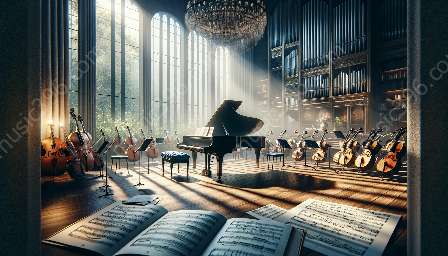Igor Stravinsky's 'The Rite of Spring' is one of the most influential and controversial works in the history of music and ballet. Its impact on the evolution of 20th-century music and ballet has been profound, influencing composers, choreographers, and musicians for generations. To understand its significance, we will explore the historical context, the musical and balletic innovations, and its influence on music composition and analysis of great composers' work.
Historical Context
The premiere of 'The Rite of Spring' in 1913 caused a sensation in Paris, with its avant-garde music and provocative choreography by Vaslav Nijinsky. The dissonant harmonies, irregular rhythms, and primal themes shocked the audience and ignited a riot. However, this groundbreaking work transformed the artistic landscape of the 20th century, paving the way for new artistic expressions.
Musical Innovations
Stravinsky's composition in 'The Rite of Spring' challenged traditional tonality and rhythm. The use of polyrhythms, ostinato, and dissonance pushed the boundaries of conventional music, laying the foundation for modernism in music composition. The introduction of new instruments and unconventional playing techniques expanded the orchestral palette, inspiring future generations of composers to explore new sonic possibilities.
Balletic Innovations
Nijinsky's choreography for 'The Rite of Spring' revolutionized ballet by rejecting classical ballet techniques and incorporating raw, expressive movements. The dancers' earthy movements and ritualistic gestures broke away from the graceful and elegant ballet style, ushering in a new era of modern dance. This departure from tradition had a lasting impact on ballet and influenced choreographers to experiment with innovative movements and expression.
Influence on 20th-Century Music
'The Rite of Spring' exerted a profound influence on 20th-century music by challenging established norms and inspiring a new generation of composers. Its innovative use of harmonies, rhythms, and instrumentation opened the door to experimentation and paved the way for a wide range of musical styles, including atonality, serialism, and minimalism. Composers such as Arnold Schoenberg, Béla Bartók, and Charles Ives were inspired by its bold exploration of sound and structure, influencing their own compositions and contributing to the diversity of musical expression in the 20th century.
Influence on Ballet
The impact of 'The Rite of Spring' on ballet was equally significant. Its rejection of traditional ballet techniques and embrace of raw, elemental movements inspired a new wave of choreographers to break free from classical ballet conventions. The groundbreaking choreography of 'The Rite of Spring' paved the way for modern and contemporary dance, leading to the development of new movement vocabularies and thematic explorations in ballet and dance.
Impact on Music Composition and Analysis of Great Composers' Work
'The Rite of Spring' has had a lasting impact on the field of music composition and the analysis of great composers' work. Its innovative use of musical elements, such as dissonance, polyrhythms, and unconventional instrumentation, continues to inspire composers to push the boundaries of musical expression. Additionally, musicologists and scholars have extensively analyzed and discussed the complex structure and revolutionary nature of 'The Rite of Spring,' contributing to a deeper understanding of the intersection of music theory, composition, and cultural history.
In conclusion, Igor Stravinsky's 'The Rite of Spring' has left an indelible mark on the evolution of 20th-century music and ballet. Its innovative compositions and groundbreaking choreography challenged artistic conventions, inspiring generations of composers, choreographers, and musicians to explore new frontiers in artistic expression. The work's enduring influence on music composition and analysis of great composers' work continues to resonate with audiences and scholars, securing its place as a milestone in the history of music and ballet.




























